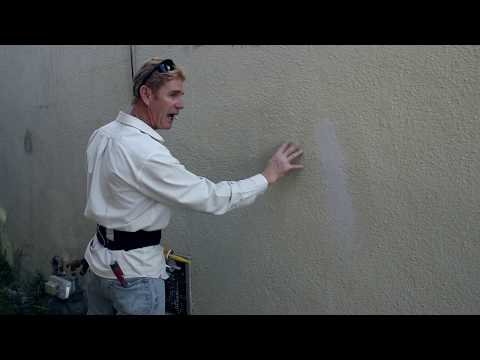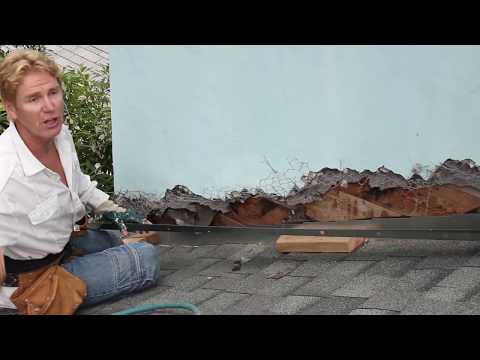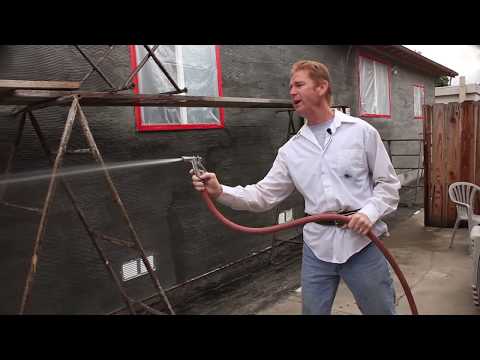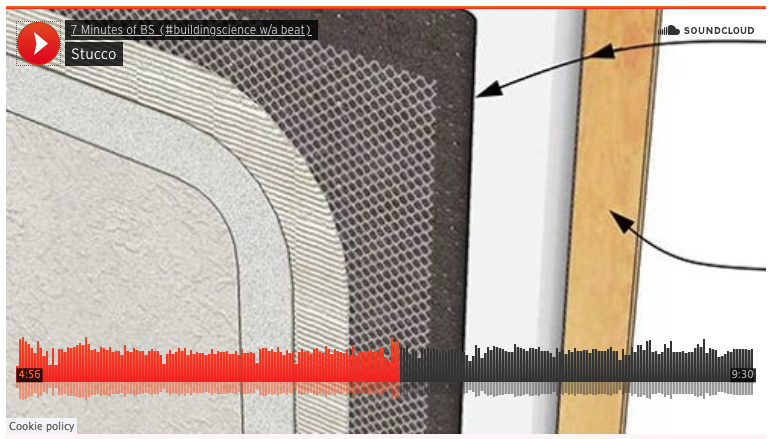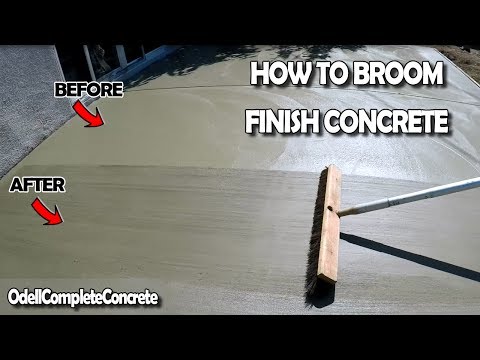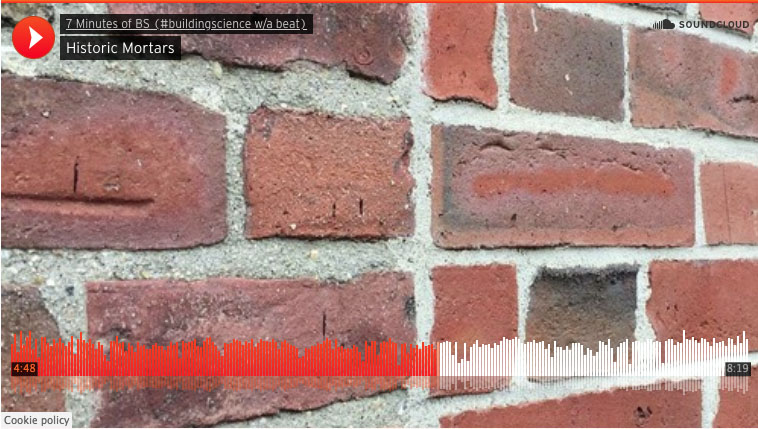It's all about the sand. (and eye protection.)
Kirk was asked to repair the plaster patches of some holes cut for plumbing access. But he wasn't the first stucco contractor asked if he could fix the holes.
The other guy also answered "Absolutely" to the question "Can you blend patches to these holes invisibly?"—but as it turned out, he should have replied "Nope."
Why did the other guy's repair look so bad?
One reason is that the other guy used raw stucco, making some of the patches three inches thick. Raw stucco doesn't have the right sand to match the finish of this building.
The finish he is trying to match is locally called Santa Barbara texture, or Smooth Mission Finish. To match a finish, you need to use the same material.
The sand used to do the base coat of the patch is plaster sand, whose texture is similar to talcum powder. It is the finest sand that Kirk uses for plastering.
"In order to match a finish, you have to use the right material. It doesn't matter how good you are—or how good you think you are—if you're not using the right aggregates, you're not going to match the texture."
After the coat is loaded onto the patch, skip trowel the surface. You may need to wait five or ten minutes before smoothing the surface. Because Kirk is the 'Plaster Fantaster Man,' he jumps into smoothing the surface right away.
Kirk can tell from looking closely at the existing finish, that they applied a finish and then a texture because the trowel marks of the fist finish are evident. If you try to just apply a texture without applying a finish, the patch will not blend.
After applying the stucco, Kirk uses a sponge float to smooth and tie in the edges.
—Kirk Giordano is a plaster and stucco contractor in the San Francisco Bay Area. His YouTube channel has a lot more videos.
